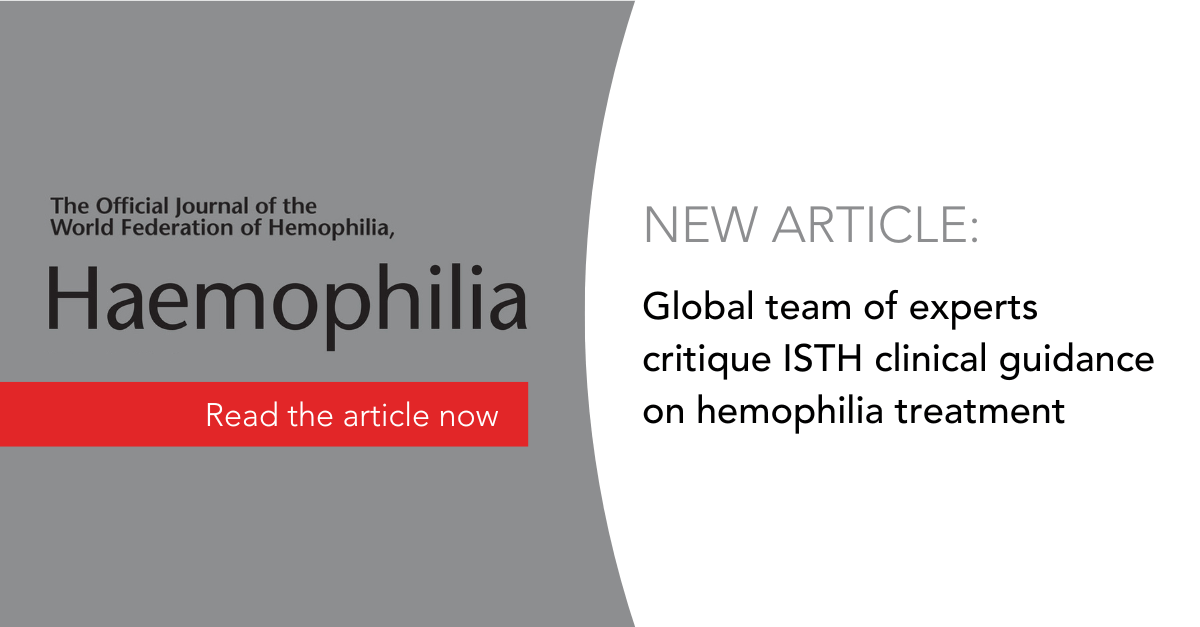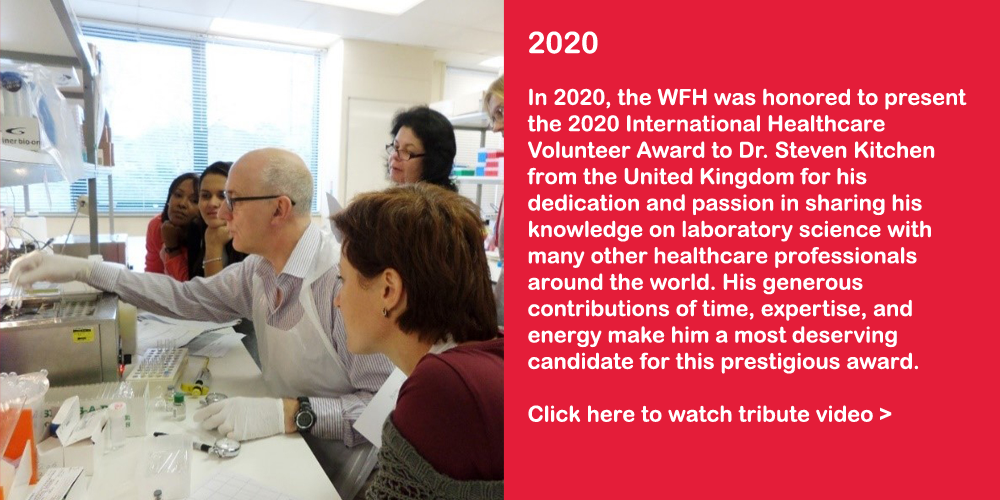A rigorous examination of the ISTH guidelines was undertaken by a team of 49 stakeholders in the field including experts in hemophilia care, researchers, physicians, patients, and patient advocates, representing a number of organizations worldwide, including AICE, AHAD-AP, AHCDC, ATHN, CLAHT, EHC, French CRH & MHEMO, GTH, HTCCNC, NBDF, PEDNET, UKHCDO and the WFH. The resulting critical appraisal, “The International Society on Thrombosis and Haemostasis Clinical Practice Guideline for treatment of congenital haemophilia – a critical appraisal” published in Haemophilia, highlights the issues in the ISTH document that could impact health outcomes for individuals with hemophilia worldwide.
Here is a plain-language summary of “The International Society on Thrombosis and Haemostasis Clinical Practice Guideline for treatment of congenital haemophilia – a critical appraisal”. To read the full version, please click here.
The International Society on Thrombosis and Haemostasis (ISTH) recently released new guidelines for the treatment of hemophilia, addressing the effectiveness and roles of various hemostatic agents for patients with or without inhibitors. These recommendations were developed using a methodology known as GRADE, which, in its most strict application, considers only observations from randomized clinical trials as valid, where patients are randomly assigned to two treatments for comparison.
The stringent application of this strategy resulted in 13 recommendations with significant practical implications. For example, these guidelines suggest that:
- Prophylaxis should be reserved for patients with severe or moderately severe hemophilia (< 2% factor levels).
- Various clotting treatments—including recombinant, short or long half-life agents, as well as non-replacement subcutaneous therapies—are considered equivalent.
- Low-dose prophylaxis is viewed as an acceptable option when resources are limited.
- The use of plasma-derived FVIII concentrates is favored to start treatment to reduce the risk of inhibitor development.
- Emicizumab is mentioned only as a potential prophylactic option for hemophilia A patients with inhibitors.
However, extensive data from observational clinical studies, registries, and the global clinical experience with various hemophilia treatments challenge these guidelines, which are based on an analysis deemed unsuitable for the full scope of available scientific evidence. This article, authored by numerous experts, highlights the weaknesses and inadequacies of this approach. Its primary aim is to remind the community that guidelines should also enable and motivate all relevant stakeholders to advocate for broader access to a diverse range of treatments and improve the health outcomes for individuals with hemophilia worldwide by incorporating all available scientific data and patients’ perspective.
To read “The International Society on Thrombosis and Haemostasis Clinical Practice Guideline for treatment of congenital haemophilia – a critical appraisal”, click here. To read the WFH Guidelines for the Management of Hemophilia, 3rd edition, please click here.












